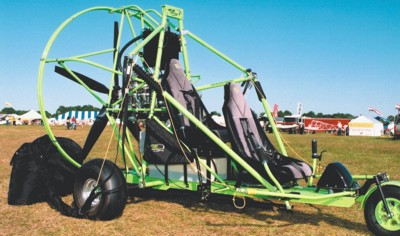
On a warm summer evening, a large field of 3-foot-tall oats sways gently in the breeze. In this pastoral setting a runway is cut down the middle. The farmer who owns this field has a light aircraft he flies from his country property, and he’s kind enough to allow Tim Norling, a local powered parachute pilot, to use it, too. Norling operates Let’s Fly, an Infinity powered parachute dealer 20 miles north of Minneapolis, Minnesota. By the time Norling gets his Infinity powered parachute set up, the winds have quieted down, as we hoped they might. It is a beautiful evening for flying in Minnesota, and I am ready for a flight. Some pilots say, “Oh, those powered parachutes are too vulnerable. You can only fly them in gentle winds.” Yeah, so? Is it really imperative to fly in strong winds? Is being restricted to mild conditions a bad thing? Powered parachutes tend only to be flown when it’s pleasant to do so.












